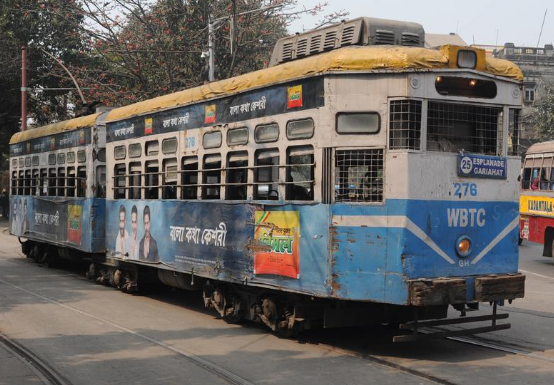The Timeless Charm of Kolkata Trams: A Journey Through History and Heritage
Kolkata, formerly known as Calcutta, is a city where the past and present coexist in a fascinating dance of tradition and modernity. Among its many iconic features, the Kolkata tram stands out as a symbol of the city’s rich heritage and enduring charm. As the oldest operating electric tram system in Asia, Kolkata’s trams have been a silent witness to the city’s evolving landscape for over a century. Let’s embark on a journey through the history, fame, and unique appeal of Kolkata trams.
A Glimpse into History
The story of Kolkata trams dates back to the late 19th century. The first horse-drawn trams were introduced on February 24, 1873, operating between Sealdah and Armenian Ghat Street. However, it was not until November 1902 that the electric trams began to ply the city’s streets, marking the beginning of a new era in urban transportation. The Calcutta Tramways Company (CTC) was established to manage the service, and it soon became an integral part of the city’s daily life.
The Golden Age
The early 20th century was the golden age for Kolkata trams. With an extensive network covering major parts of the city, trams became the preferred mode of transport for many residents. The tram system was not just a means of transportation but a lifeline connecting various neighborhoods, facilitating trade, and fostering community ties. The distinctive clang of the tram bell and the leisurely pace of the journey became synonymous with the rhythm of Kolkata life.
Trams in Popular Culture
Kolkata trams have left an indelible mark on popular culture. They have been featured in numerous films, books, and songs, capturing the imagination of artists and audiences alike. From Satyajit Ray’s masterpieces to contemporary Bengali cinema, trams often serve as a nostalgic backdrop, evoking a bygone era. Literature, too, has celebrated trams, with many writers reminiscing about tram rides and the unique perspectives they offer on the city’s vibrant street life.
The Fame and Decline
Despite their charm and historical significance, Kolkata trams faced a decline in the latter half of the 20th century. The rise of buses, taxis, and private vehicles led to a reduction in tram ridership. Moreover, the aging infrastructure and increasing traffic congestion posed significant challenges. Many routes were discontinued, and the tram network shrank considerably. Yet, the trams retained a loyal following, and their iconic status remained unshaken.
Revival and Modernization Efforts
In recent years, there have been concerted efforts to revive and modernize the tram system. The West Bengal Transport Corporation (WBTC), which now oversees the trams, has undertaken several initiatives to restore their glory. Some trams have been refurbished with modern amenities while retaining their vintage charm. There are also plans to introduce heritage tram tours, aimed at tourists and history enthusiasts, to showcase the city’s rich cultural heritage.
The Enduring Appeal
What makes Kolkata trams special is their ability to transport passengers not just from one place to another, but also back in time. A tram ride in Kolkata is a journey through history, offering glimpses of colonial-era architecture, bustling markets, and tree-lined avenues. The leisurely pace of the trams allows for a reflective and unhurried exploration of the city, contrasting sharply with the frenetic pace of modern life.
Conclusion
Kolkata trams are more than just a mode of transport; they are a living heritage, a testament to the city’s history and resilience. As they navigate the streets of Kolkata, they remind us of a time when life was simpler and slower, yet richer in many ways. Whether you are a resident or a visitor, a ride on a Kolkata tram is an experience that connects you to the soul of the city, offering a unique blend of nostalgia and discovery. In a rapidly changing world, Kolkata trams stand as a poignant reminder of the enduring charm of tradition and history.



